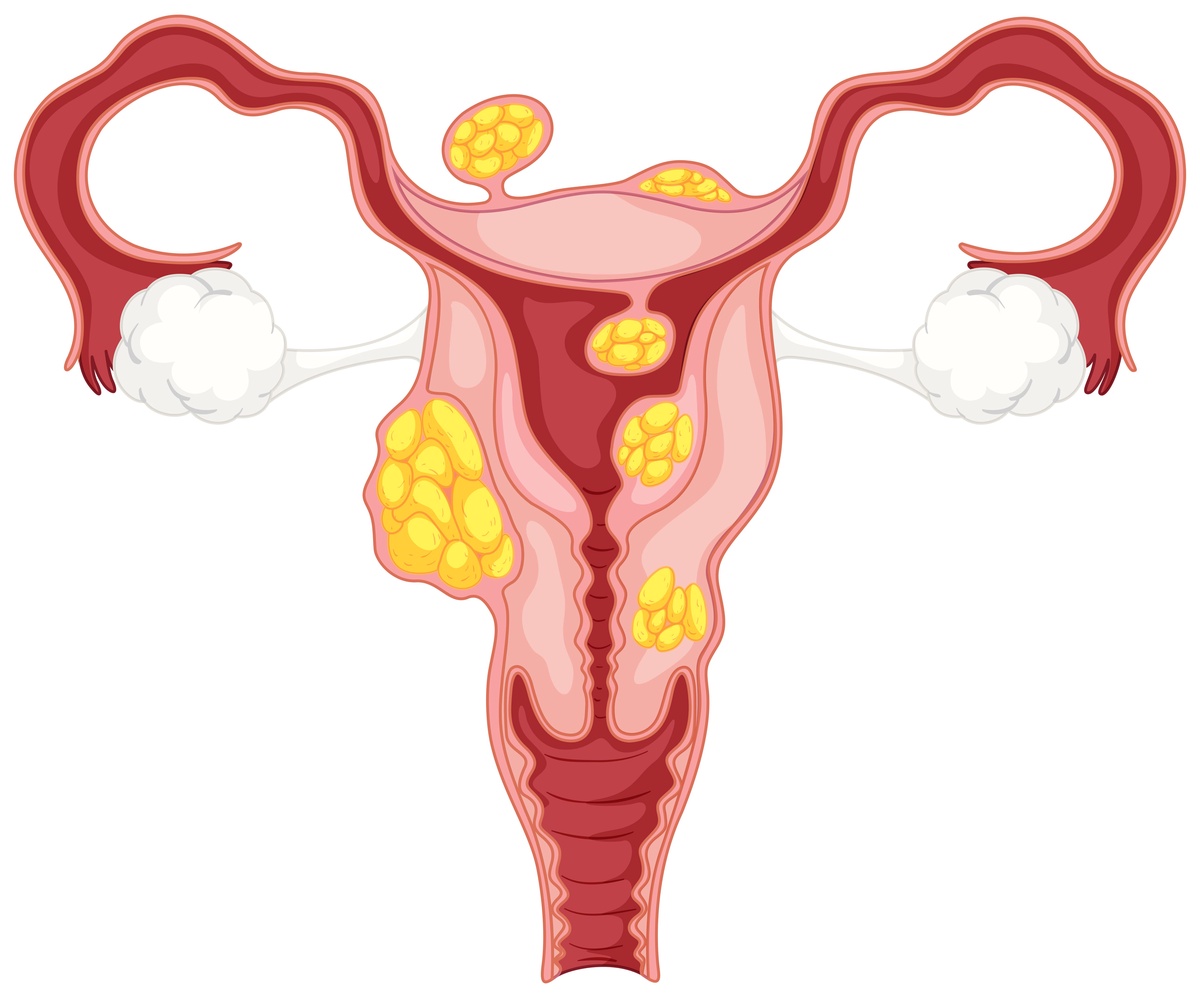An enlarged-shaped uterus is known as a bulky uterus. A "bulky uterus" is a term used in medical contexts to describe a uterus that is larger or heavier than usual. This enlargement can be due to various reasons, and it is often identified through medical imaging techniques such as ultrasound. The treatment for a bulky uterus depends on the underlying cause. It's important for individuals with a diagnosis of a bulky uterus to consult with their healthcare provider for a thorough evaluation and appropriate management plan based on the specific condition causing the enlargement.
Causes of Bulky Uterus
A bulky uterus can be caused by various conditions, and the underlying cause may differ from person to person. Here are some common causes:
Uterine Fibroids: These are noncancerous growths of the uterus that often appear during childbearing years. Fibroids can cause the uterus to become enlarged and bulky.
Adenomyosis: This condition occurs when the tissue that lines the uterus (endometrium) starts growing into the muscular walls of the uterus. It can result in an enlarged and tender uterus.
Endometrial Hyperplasia: This is an overgrowth of the lining of the uterus (endometrium), which can cause the uterus to become bulky. It may be associated with an imbalance of estrogen and progesterone.
Uterine Cancer: In some cases, a bulky uterus may be indicative of uterine cancer. Cancerous growths can cause the uterus to enlarge.
Pregnancy: During pregnancy, the uterus naturally enlarges to accommodate the growing fetus. This is a normal and expected cause of uterine enlargement.
Infection or Inflammation: Infections or inflammatory conditions affecting the uterus, such as pelvic inflammatory disease (PID), can lead to an enlarged uterus.
Fluid Accumulation: Conditions that cause the accumulation of fluid within the uterus, such as endometrial cysts or hydrometra, can result in an enlarged uterus.
Hormonal Imbalances: Hormonal imbalances, particularly an excess of estrogen, can contribute to the development of conditions like fibroids and endometrial hyperplasia, leading to uterine enlargement.
Symptoms of Bulky Uterus
The symptoms of bulky uterus can vary depending on the underlying cause. In some cases, a bulky uterus may not cause noticeable symptoms, and the condition may be discovered incidentally during a pelvic exam or imaging studies. However, when symptoms do occur, they may include:
Menstrual Changes:
. Heavy menstrual bleeding (menorrhagia)
. Irregular menstrual cycles
. Prolonged periods
2.Pelvic Pain:
. Pelvic pain or discomfort
. Pain during menstruation (dysmenorrhea)
. Pain during sexual intercourse
3.Pelvic Pressure:
. A feeling of fullness or pressure in the pelvic region
4.Urinary Symptoms:
. Frequent urination
. Difficulty emptying the bladder completely
- Backache or Leg Pains:
. Backache or lower back pain
. Leg pains or a sensation of heavy legs
6.Enlarged Abdomen:
. Abdominal bloating
. An enlarged abdomen
7.Menopausal Symptoms:
. In postmenopausal women, bleeding or spotting may occur, which is abnormal and should be evaluated promptly
Bulky Uterus Treatment
The treatment for a bulky uterus, characterized by its enlargement, is contingent upon the underlying cause. If fibroids are identified as the culprit, healthcare providers may opt for conservative measures such as hormonal medications or Gonadotropin-Releasing Hormone (GnRH) agonists to alleviate symptoms or reduce the size of the fibroids. In more severe cases, surgical interventions like myomectomy (fibroid removal) or hysterectomy (removal of the uterus) might be considered.
Adenomyosis, marked by the invasion of endometrial tissue into the uterine wall, may be managed with pain relievers, anti-inflammatory drugs, or hormonal treatments like birth control pills. A last resort could be a hysterectomy if symptoms persist.
Endometrial hyperplasia, an overgrowth of the uterine lining, might be addressed with progestin therapy or, in certain cases, a dilation and curettage (D&C) procedure.
If uterine cancer is diagnosed, treatment varies based on the cancer type and stage and may involve surgery, radiation therapy, chemotherapy, or a combination.
For infections or inflammations causing uterine enlargement, antibiotic treatment is typically prescribed.
The chosen treatment strategy is personalized, considering factors like symptom severity, the patient's desire for future fertility, and overall health. Regular follow-up and monitoring are crucial to assess treatment effectiveness and adjust as needed.
if you have any concerns about a bulky uterus or infertility. Consult with an experienced fertility doctor at the best IVF centre in Delhi . do get in touch with us at Crysta IVF. There’s a very good chance that we can help. For more information visit our website or call us.


No comments yet